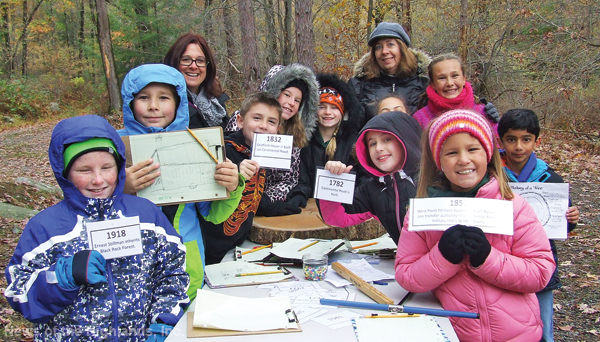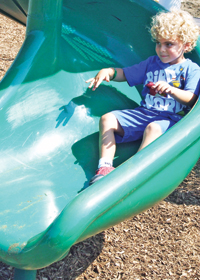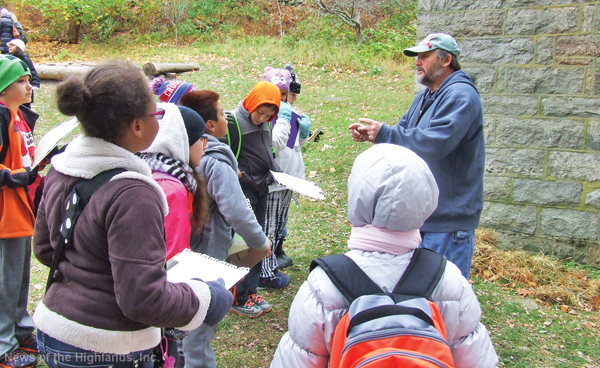
Friday’s lesson was popular with teachers and students. The teachers liked it because it combined history, science and mathematics. The kids liked it because they were in the woods.
Fourth-graders at Willow Avenue School are preparing for an archaeological dig in Black Rock Forest. They’re hoping to find artifacts from the American Revolution.
The site they’ll be excavating lies near the former Continental Road — an 18th century thoroughfare that runs through the forest and that once linked the New Windsor Cantonment with West Point.
Forest manager John Brady has had some success at the site. He’s found horseshoes and the remnants of a charcoal pit. To get ready for their assignment, students worked at three stations in the forest on Oct. 28.
Christine Cleeves’ students worked on a log — not a ship’s log or a journal, but the type of log you would find in the forest. They used it to create a time line of events of local interest and national importance.
They were working near a white oak that sprouted in 1730. The youngsters learned how to tell the age of a tree (that was the science part), and they plotted dates on the log using measurements and mathematics. And by learning the dates of 10 noteworthy events, they were absorbing some history.
Later in the day, kids explored the stone house — the former Chatfield residence that is now a haven for hikers and campers. The youngsters also traced an inscription off a stone.
Finding your way in the forest can be tricky — even if you’re driving on one of the unpaved roads. There are no signs in the woods and one tree looks a lot like the others. This reporter ventured into Black Rock, and was relieved to see familiar faces after a 10-minute drive.
He rolled down the window to find out where he was, and was welcomed by Mrs. Cleeves and her students. “Take our picture,” the teacher said. So he did!
The kids seemed happy but cold. That’s the one drawback in having school outdoors.



